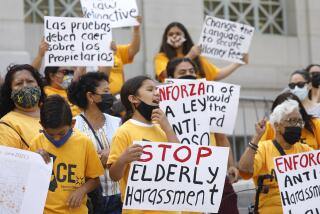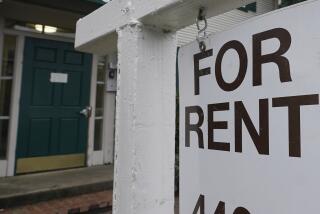Revised law clarifies security deposit issues
Topping the list of disputes between landlords and tenants is the use and alleged abuse of security deposits.
In an effort to address security deposit problems, Section 1950.5 of the Civil Code has been revised, with sections added. The new law, AB 2330, was sponsored by Assemblywoman Carole Midgen (D-San Francisco) and takes effect Jan. 1.
Triggered when a tenant gives 30 daysâ written notice to the landlord, the law adds a provision that requires landlords to give written notice back to the tenant. Why? According to the law, when the tenant moves out the âlandlord shall notify the tenant in writing of his or her option to request an initial inspection and of his or her right to be present at the inspection.â In other words, when a tenant gets ready to move out, the landlord will be required by law to offer an inspection.
Until now, most tenants simply moved out, with the landlord left to figure out repair, responsibility and cost details.
While move-out inspections are not new, requiring them by law with written notice adds another dimension. The law further requires tenant and landlord to arrange inspection a minimum of two weeks before the boxes head out the door. If the tenant doesnât want an inspection, he or she has to sign a release.
If an inspection is desired, then it is supposed to take place with the landlord and tenant present. Forty-eight hoursâ notice is required. If the tenant doesnât show up, the landlord may proceed with the inspection.
The tenant then has the option of making any repairs before moving out. The law is silent on repair details, but common sense should prevail. For example, if a tenant replaced the dining room light with another fixture, the owner can ask that the original one be professionally reinstalled (because electrical items are subject to code regulations).
Tenants who painted present a challenge, especially if the type of paint is different from what the landlord provided. With the new law, the tenant is given the option to perform the repair. But who decides what level is good enough to cover the situation?
In some cases, splitting the cost of repairs may be the best solution. An itemized written security deposit statement and a check (if applicable) are still legally due to the tenant, postmarked within 21 days.
Unless the landlord and tenant can agree, resolution may be up to a judge in Small Claims Court. If the court holds the landlord liable for bad faith by not returning the deposit fairly or on time, the award becomes larger. The new maximum is equal to double the value of the original security deposit. Previously, the penalty to landlords was a flat $600.
In terms of definitions, the code is virtually unchanged, with security deposit deductions allowed for such items as unpaid rent and repairs of damage. The term âexclusive of ordinary wear and tearâ caused by tenant, guest or licensee of the tenant remains unchanged.
The deposit deduction for cleaning the unit remains virtually the same. Added is a detail effective for leases after Jan. 1, which allows for cleaning up to the same level as at move-in.
Use a detailed walk-through checklist at move-in and avoid straining your memory later. The California Department of Consumer Affairs offers one online at www.dca.ca.gov/legal/ landlordbook. Tips on repair and move-out can also be found at the site.
*
H. May Spitz can be reached for comments at [email protected], no attachments, please.
More to Read
Inside the business of entertainment
The Wide Shot brings you news, analysis and insights on everything from streaming wars to production â and what it all means for the future.
You may occasionally receive promotional content from the Los Angeles Times.









